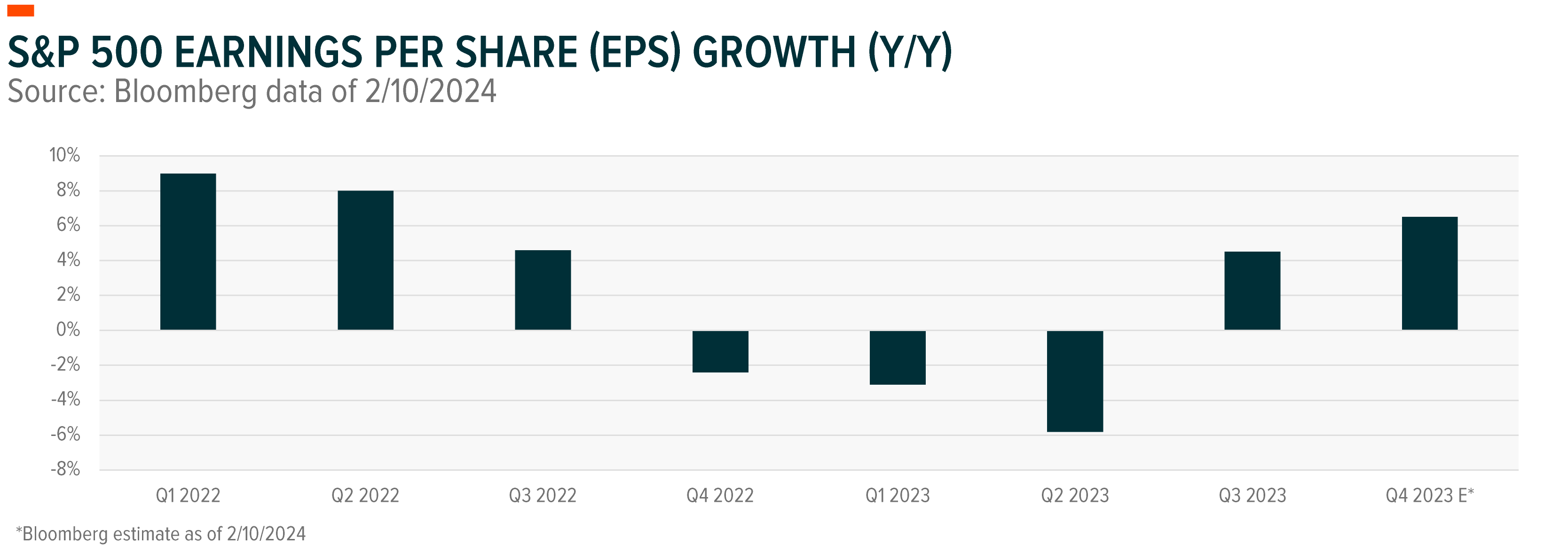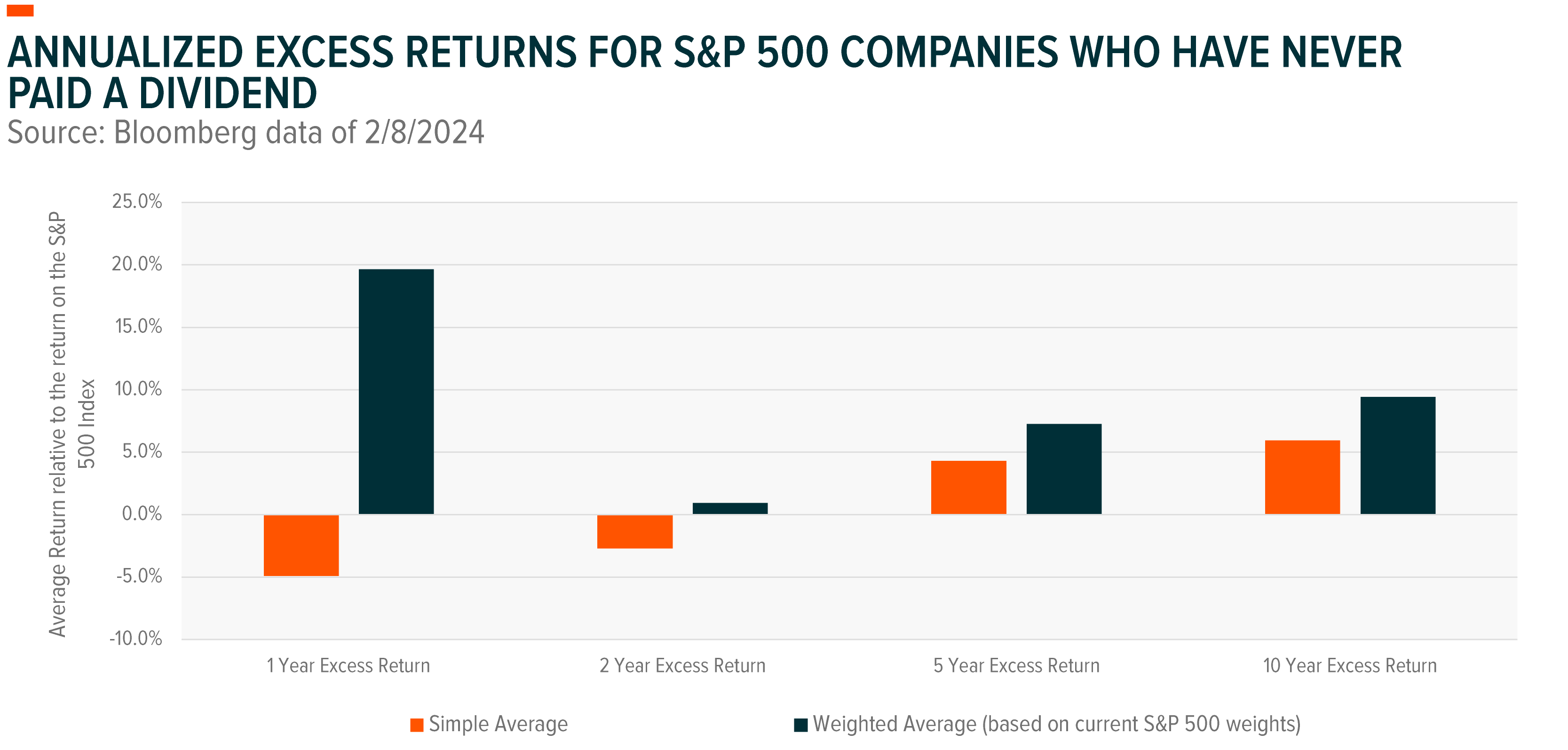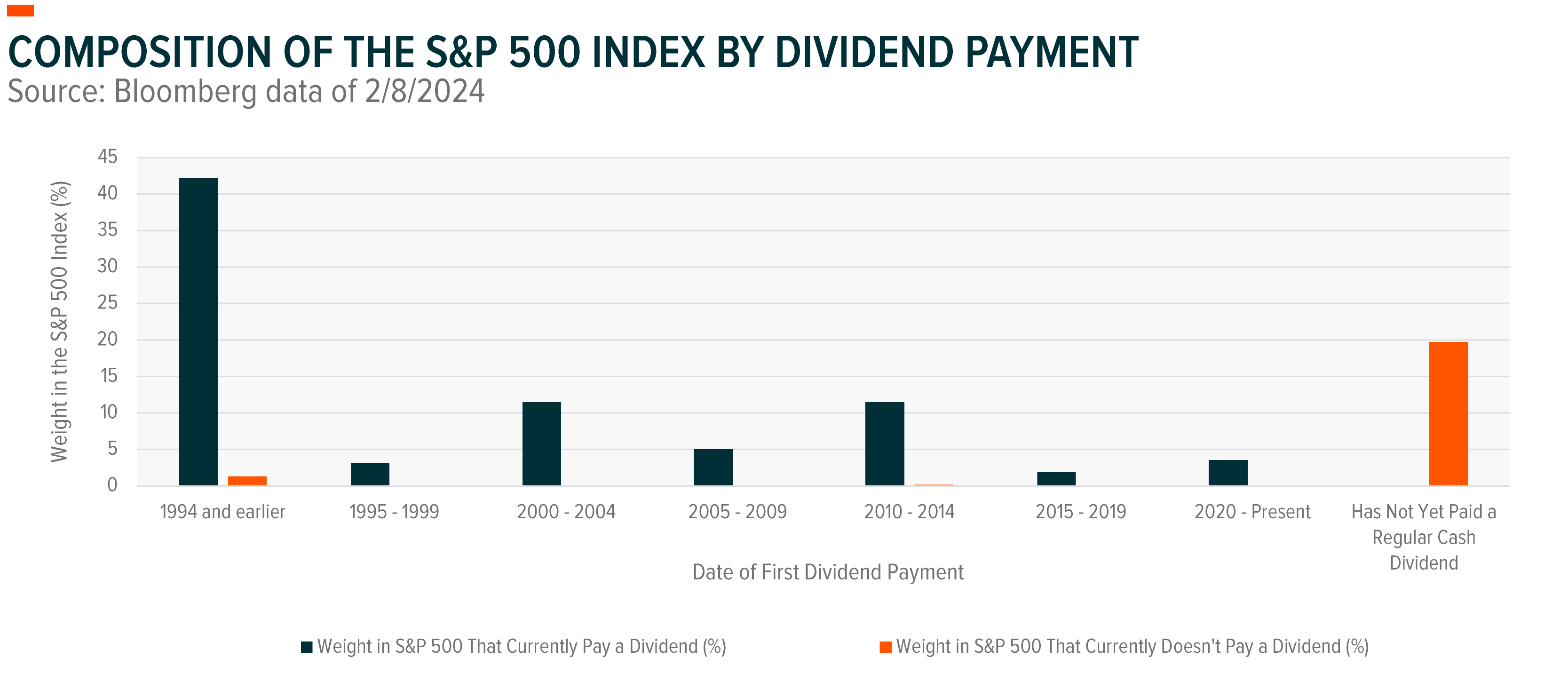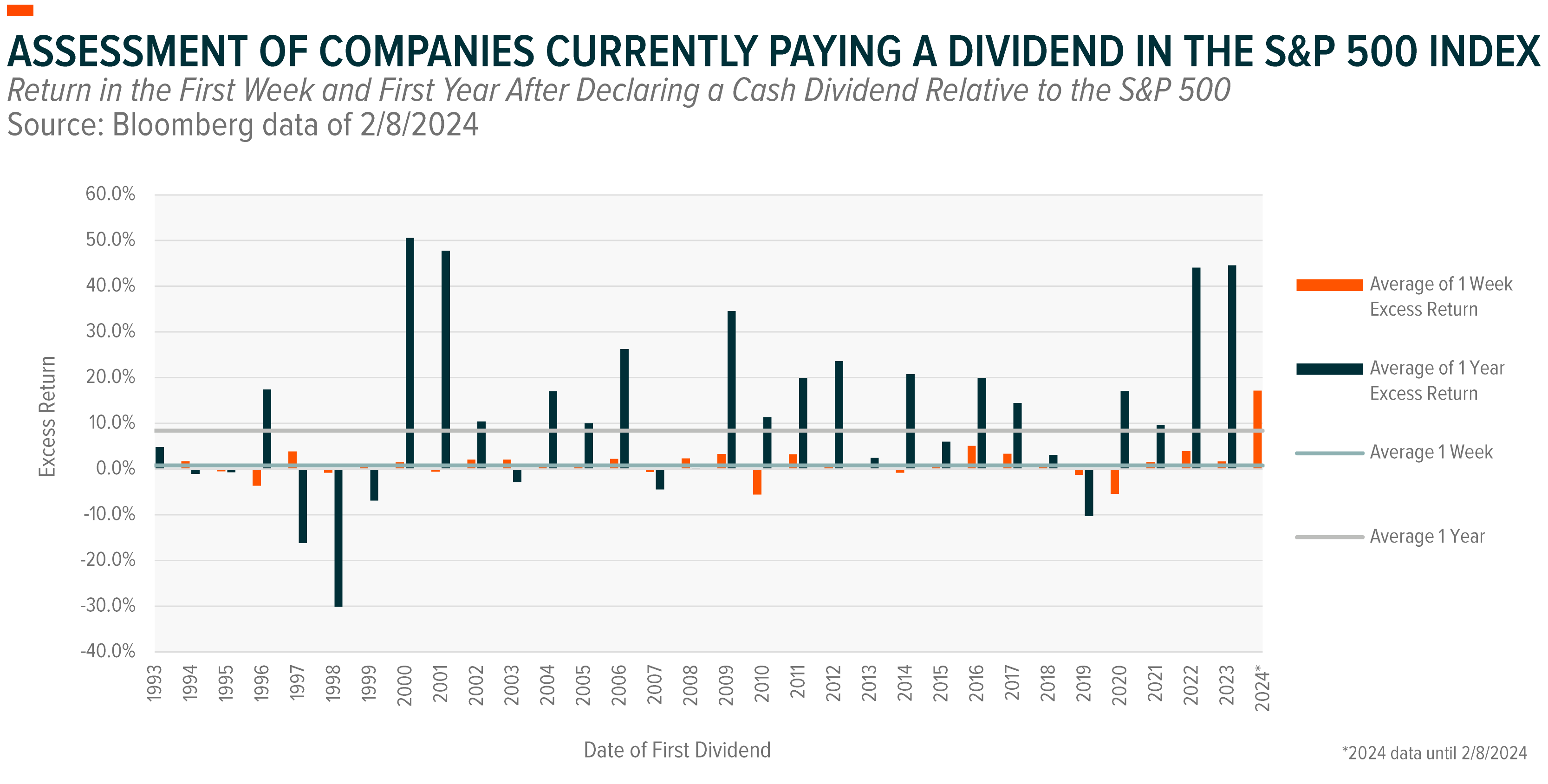
Markets are off to yet another concentrated start to the year, with key mega cap companies continuing their dominance. Meta, formally Facebook, celebrated its 20th anniversary and became the fourth company in the Magnificent Seven to pay a dividend. Certainly, a moment to celebrate, but what does this milestone typically mean for innovative companies going forward?
Conversation Starters
- Risk sentiments are improving despite the Fed and Red Sea concerns.
- Dividend payments are typically rewarded as a sign of financial strength.
- Total returns matter more than dividends.
Economic Resilience Boosting Earnings Expectations and Supporting Risk Sentiment
Robust economic data support the potential of the U.S. economy avoiding a recession. Q4 GDP, consumer spending, and labor market data all came in well above market expectations. Additionally, we’re starting to see PMI data tick up, with improvements in new orders. While economic data generally surprised to the upside1, rising consumer credit and delinquencies remain a concern for continued economic strength.2
Accurate economic projections remain a challenge in the post-pandemic world– with normal still an elusive concept. Additionally, seasonal adjustments can have a large impact on January’s data.3 Heightened macro data uncertainty increases the emphasis on corporate earnings season, as economic resilience has the potential to shine through in both top-line and bottom-line growth. With 67% of the companies in the S&P 500 Index having reported, the percentage of positive earnings surprises is above the 10-year average, and the index is currently on track to report its second quarter of year-over-year earnings growth.4 Earnings expectations have been revised upward as reported earnings have come in above expectations. Current projections of 6.5% year-over-year growth would be the fastest EPS growth since mid-2022.5 As illustrated on the chart below, the trend in S&P 500 earnings growth is improving.

Economic optimism is counterbalanced against markets scaling back their interest rate cut expectations. Markets started 2024 almost certain that the Fed would start cutting interest rates in March. However, the first month and a half have brought market expectations more in line with the Fed’s dot plot.6 While still slightly more optimistic than the Fed on rate cuts, these expectations have been pushed later in the year. The first interest rate cut is most likely to occur at the June FOMC meeting, alongside the Fed’s updated economic projections.
Markets have powered to new highs, but strength has been concentrated. Although economic resilience would typically favor smaller and more cyclical market areas, Fed risk, geopolitical risk, and earnings strength within the mega cap space have helped maintain market concentration thus far. While only 30% of the companies in the Russell 2000 Index have reported, thus far their earnings are surpassing expectations by 3.1% on average, significantly less exciting than the 7.6% average EPS beat on the S&P 500 Index.7
Dividends – A Sign of Fiscal Strength
A company’s first dividend is a big moment. It provides an indication of financial stability and confidence that it can continue to pay and increase its distributions to shareholders. In a market that is focused on quality and cash flows, this is an encouraging signal of financial strength. Currently, 403 companies comprising 79% of the weight of the S&P 500 Index pay a dividend. As illustrated in the chart below, 42% of the current dividend paying companies started paying dividends prior to 1994. But it’s also worth noting that almost 20% of the index has not yet paid a regular cash dividend.8
In aggregate over the last 20 years, companies announcing their inaugural cash dividends provided an 0.8% return in excess of the S&P 500 Index in the week following the announcement, while having an 8.4% excess return during the year following this announcement. But these high-level figures brush past the trends in how markets have rewarded this initial dividend payment. On average, companies that started to pay dividends in 2022 and 2023 experienced the highest one-year excess returns for companies declaring their inaugural dividend since 2000 and 2001. This reflects the current market prioritization on cash flows and balance sheet strength. Leading up to the Dot.com bubble, markets prioritized reinvestment and growth rather than committing to pay dividends. As illustrated on the chart, this was one of the few times when markets penalized starting to pay dividends – but this sentiment shifted to the opposite extreme in 2000 and 2001.
Portfolio Considerations of Prioritizing the Reinvestment Rate or the Payout Ratio
What’s more important, price appreciation as markets buy into a leadership team’s vision, or capital returned to shareholders through either dividend income or share buybacks? Ultimately, from an investor perspective, total return is generally what matters. Apart from investors who need predictable income streams, the composition of that return is generally less important – especially when considered over an extended period.
Companies with stable earnings and cash flows can typically pay out a higher portion of their earnings. For these companies, the financial stability signaled by committing to pay regular cash dividends is typically worthwhile. Conversely, financial flexibility is generally more valued in innovative market segments where high levels of capex and R&D may be needed to establish a competitive advantage in a rapidly growing segment. While Meta’s inaugural dividend was certainly exciting, its low payout ratio retains capital to invest in exciting innovations relating to artificial intelligence (AI) and its continued advancement in augmented and virtual reality (AR & VR).
Although committing to pay dividends was greatly rewarded during the last two years, markets continue to reward companies at the forefront of innovation. Focusing on the 20% of the S&P 500 Index that has never paid a recurring cash dividend, these companies have on average outpaced the broader market over a five- and ten-year horizon. While interesting, investors are likely to note the dramatic change in the yield environment over the last two years, as higher interest rates prioritized cash flows and dividends. Despite this structural change, when weighing these returns in line with their exposure within the S&P 500 Index, non-dividend paying companies continued to shine. The exceptionally strong one-year excess returns were certainly boosted by mega caps that stand to benefit from the advancement and continued adoption of AI and key related themes.
Thematic investing provides exposure to innovative ideas that are likely to drive structural changes. This exposure can touch on different stages along the adoption curve, while also potentially including a range of market cap exposures. Typically, thematic equity has a low dividend yield. This is particularly true for themes that are earlier in their adoption or are dominated by smaller companies. But as innovations grow in adoption, scale improvements can potentially support improved profitability, stronger cash flows and, in time, these companies returning more capital to shareholders.

 Michelle Cluver
Michelle Cluver
